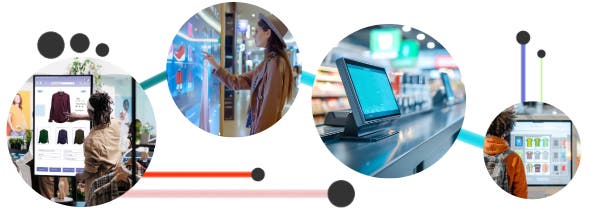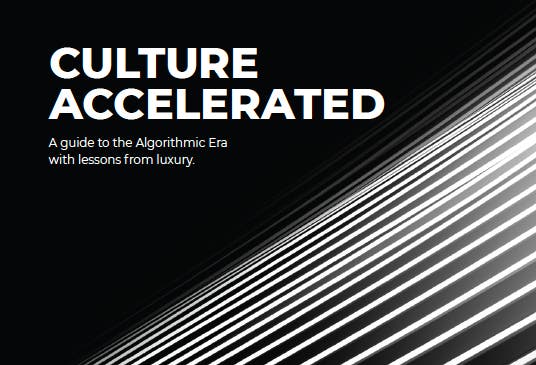Winning the Demand Game
After two years of stop-start growth, 2025 is shaping up as a year of decisive winners and clear laggards. Shoppers are trained to compare prices in seconds, creators set culture overnight and AI lets competitors launch a targeted offer before lunch. In this pressure-cooker market, complexity is the enemy requiring CMOs to translate shifting demand into revenue fast.
This article distills dentsu’s latest data and frontline experience into practical moves any brand can apply this quarter. No grand theory, just actions that turn every swipe into profit and every customer into an advocate.
Ready to move ideas to impact?
Across APAC, shoppers are stretching every dollar yet still craving products that reflect their culture and values. The article below unpacks five market-winning habits: making price-plus-quality benefits unmistakable; turning live cultural moments in social feeds into seamless “add to cart” journeys; using lightweight AI to personalise messages at the speed of conversation; removing production bottlenecks so ideas launch in hours, not weeks; and tracking business-first metrics, time-to-buy, repeat rate, content velocity and cultural hit ratio to prove every creative choice pays off. Together, these behaviours transform casual scrolling into profitable action and one-off buyers into loyal advocates, even in a cautious economy.
Scroll down to dive into each insight with practical examples and fresh data. If you’d like hands-on support applying them to your brand, simply complete the form and our specialists will arrange a no-obligation session to map the fastest path from idea to impact.
Read the Room
APAC wallets are conflicted
58% feel the economy is weak yet 55% rate their own finances “good or excellent.” Shoppers will bargain-hunt on staples but still splurge on wellness and self-expression. Brands that signal value without sacrificing quality earn trust and share of wallet. Highlight the saving and the benefit (“Save 10%, stay 100% organic”), bundle tiers so buyers can flex budgets and keep fees crystal clear to remove friction.

What to do
- Show the price break and the benefit (e.g. "Save 10%, still 100% organic").
- Offer tiered bundles so customers can trade up or down as budgets allow.
- Keep return policies and fees crystal-clear to build trust fast.
Show Up Where Culture Happens
Seventeen percent of all online sales already start inside social feeds and 46% of Gen Z opens social, not search when exploring products. Culture is the new shelf space. Track rising memes or micro-communities, then serve useful content that fits the moment. Layer instant buying paths, swipe-up links, QR codes, pinned comments to convert attention on the spot. Authenticity beats reach, so partner with creators who live the niche rather than chasing the biggest follower count.

What to do
- Track rising memes or fandoms and meet them with useful content, don't just "borrow" the trend.
- Add direct shopping links or QR codes to short-form video, live streams, even comments.
- Partner with niche creators who own a passionate community; authenticity beats reach.
Make Personalization Painless
Shoppers expect recognition, not creepy tracking. Centralize copy, imagery and video in one digital asset hub, then use lightweight AI to remix headlines or colorways for each segment in minutes. Test two or three variants per campaign, keep the winners and retire the rest. This rhythm turns personalization from a quarterly project into a daily habit.

What to do
- Centralise images, copy and video in a single digital-asset manager so teams stop recreating work.
- Use AI to remix headlines, colours and calls-to-action for each audience segment — tools exist today to do this in minutes
- Test two or three variants per campaign; keep the winners, kill the rest.
Speed Up The Content Factory
By 2030 more than half of digital experiences will be built in near real time. Map every step from brief to publish, automate anything that is cut-and-paste and set a rule: no asset waits more than 24 hours for feedback. Track content velocity (assets published per week) against sales lift to prove speed pays.

What to do
- Map the basic steps: brief → create → approve → publish. Automate anything that’s copy-paste or file-moving.
- Set a simple rule: no asset waits more than 24 hours for feedback.
- Track “content velocity” (assets published per week) and link it to sales uplift.
Measure What Matters to Money
| Metric | Plain-English meaning | Why it pays |
| Time-to-Buy | Hours from first ad view to checkout | Faster cash flow |
| Repeat Rate | % of buyers who come back in 90 days | Cheaper than prospecting |
| Content Velocity | New assets live each week | Fuels personalization |
| Cultural Hit Ratio | % of trend-based posts that convert | Shows culture drives sales |
The takeaway
Value shoppers can see, culture they can feel and experiences built just for them that’s the growth formula for 2025. Nail transparent pricing, embed yourself in culture, personalize at scale, accelerate production and track the metrics that tie straight to revenue. Brands that act now will turn every swipe, tap and scroll into money in the till.
Related whitepapers & thought-leadership

APAC Consumer Mindset Report - Q2 2025

iProspect's Culture Accelerated

